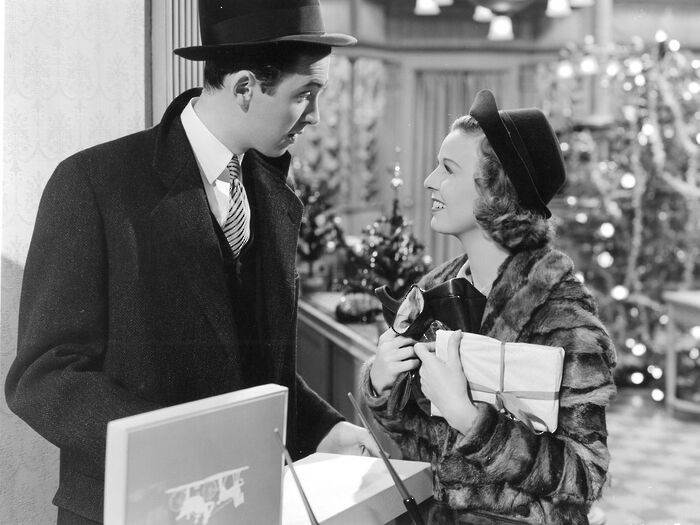A cover is not Mary Poppins Returns
Nothing could be more perfect for a winter afternoon than this sequel to Disney’s classic musical, says Lillian Crawford

Directed by Rob Marshall
Starring Emily Blunt, Lin-Manuel Miranda, Ben Whishaw
Released 21 December
The suggestion that nothing could hold a candle to Mary Poppins is, of course, stuff and nonsense. Disney’s 1964 classic is undoubtedly a masterpiece, but much like the eponymous nanny, it is only practically perfect. The film’s lofty esteem came with context, released when the studio was churning out such live-action drivel as The Three Lives of Thomasina, about a cat who thinks she's God, and the cultural prominence given to the Shermans’ sensational songs. However, it is a diamond in the rough, a cockney-accented frolic that shines in Technicolor wizardry before descending into the abyss of ‘I Love To Laugh’. These are quibbles we forgive, yet they are still dust on the frame.
History in cinema, as in plot, repeats itself here. Indicated in the title, Mary Poppins Returns, this is at once a remake and a sequel – a requel, if you will. The recent output of Disney hardly outshines that of the early sixties, having suffered through the likes of A Wrinkle in Time and anticipating a trio of live-action remakes in the new year. Indeed, the last stellar musical production from the House of Mouse was director Rob Marshall’s own offering, a somewhat sanitised version of Into the Woods. The texture and emotional complexity of a Stephen Sondheim score is brought out here by Marc Shaiman, composing a glorious show that is both apposite and unashamedly fantastical.
We return, with bittersweet nostalgia, to 17 Cherry Tree Lane, replete with canon-firing Admiral and fretful housemaid, a scene-stealing Julie Walters on Mrs Overall form. It seems that much is as it was in 1910, with Jane and Michael Banks subscribing to Freudian theory as parental facsimiles, and a trio of well-bred children. Well-trained too, as all three young actors deliver astonishingly mature performances in dialogue and in song, along with a knack for comedic timing.

Having lost their mother, Ben Whishaw rivals David Tomlinson as the new Mr Banks, albeit with less of his father’s masculine inhibition. It would take the heart of a banker to go unmoved as his children reprise the film’s strongest melody, ‘The Place Where The Lost Things Go’, and not to rejoice with the same tears in your eyes as he takes to the sky with a balloon in his fist.
Poppins has evidently returned, as per usual, to save the adults rather than the children. In the interim she indulges in the pure and magical, with a carpet-bagful of adventures to share. There is little point in drawing comparisons to Julie Andrews for, as the inimitable legend has insisted, this is very much Emily Blunt’s feature. On first impression, Michael notes she has not changed at all, but we soon realise that Mary seems quite contrary to her former ways – there is a cheekier twinkle in her eye, and with it a sharper wit. While more than capable of singing the sincere numbers with necessary straightness, so too can Blunt whip off her exuberant garters and give a raunchy cabaret number. She reveals a woman incapable of snobbery, mingling with lamplighters as easily as London socialites. Certainly no one is exempt from her deadly stare when etiquette is allowed to slip.
Despite being set only 25 years after the first film, Poppins herself stands with us in the present as a heroine clearly ahead of interwar attitudes. As we witness each scene in the original rehashed with a lightly veiled twist, so too does Disney pull out the stops to demonstrate its cinematic advances. Where ‘A Spoonful of Sugar’ was a display of stop-motion, its equivalent, ‘Can You Imagine That?’, takes us to the bottom of the beautiful briny sea in a jaw-dropping CG showcase. The studio is equally at home enjoying a ‘Jolly Holiday’ back to the golden era of 2D animation, adorned with Sandy Powell’s exquisite sherbet-coloured costumes, to celebrate the lightning tongue of Lin-Manuel Miranda. Having the boldness to cast such a thespian in a lead rôle goes a long way, with both his and Blunt’s tuneful numbers almost outshining Andrews and Dick Van Dyke’s earlier efforts.
Unfortunately, as we revisit all the supercalifragilisticexpialidocious sequences, Marshall has similarly been compelled to give us a version of Ed Wynn’s jarring Uncle Albert sequence with a decidedly unspectacular Meryl Streep cameo. The race ‘back in time’ comes across a little silly, and there were probably other moments that could have been done without. But they’re all there in P.L. Travers’s stories, in the 1964 film, and so too must they exist here. With such a formidable cast there is nary a step out of time, and Shaiman's songs are so arrestingly catchy they'll be battling to be the one you hum on the way home. Thanks to a healthy dose of sugar, Mary Poppins Returns soars to the very highest of heights.
 Arts / Plays and playing truant: Stephen Fry’s Cambridge25 April 2025
Arts / Plays and playing truant: Stephen Fry’s Cambridge25 April 2025 News / Candidates clash over Chancellorship25 April 2025
News / Candidates clash over Chancellorship25 April 2025 Music / The pipes are calling: the life of a Cambridge Organ Scholar25 April 2025
Music / The pipes are calling: the life of a Cambridge Organ Scholar25 April 2025 Comment / Cambridge builds up the housing crisis25 April 2025
Comment / Cambridge builds up the housing crisis25 April 2025 News / Cambridge Union to host Charlie Kirk and Katie Price28 April 2025
News / Cambridge Union to host Charlie Kirk and Katie Price28 April 2025





